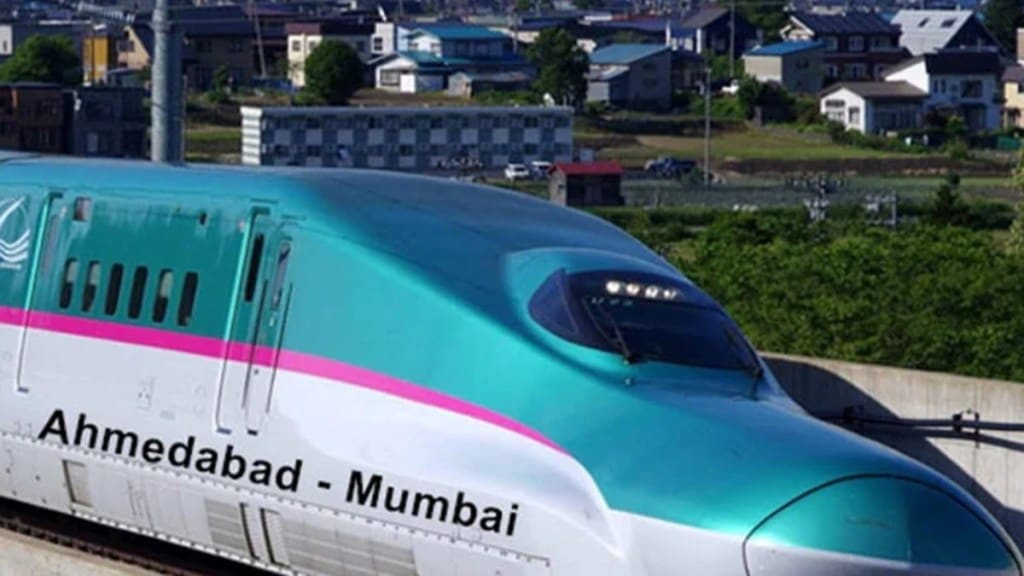Prime Minister Narendra Modi recently stated that it won’t be long before the country witnesses the operation of its first bullet train. Obviously, he was referring to the Mumbai-Ahmedabad high speed rail (MAHSR) project, whose ground-breaking ceremonies were held when the then Japanese PM Shinzo Abe visited India in mid-September 2017. Indications are that it will first start in Gujarat in 2027 and later expand to Maharashtra. The PM’s statement, however, must be seen in the context of the journey of modernisation of the Indian Railways symbolised by Vande Bharat trains, Amrit Bharat stations, and Namo Bharat Rail. Upgrading the semi-high-speed Vande Bharat to high-speed status is already on the anvil with the railways’ own Integral Coach Factory and state-run BEML collaborating to design and manufacture two prototype trainsets (of eight cars each) with a speed of 280 kmph.
The first prototype will be developed in the next two years and will undergo extensive trials on the Mumbai-Ahmedabad high-speed corridor. The plan is that the first indigenous bullet train, too, could be in operation before long. Recently, the new sleeper version of the Vande Bharat train hit a speed of 180 kmph during its trial run. The increase in the speed of Vande Bharats to 280 kmph is based on Japanese experience as the first Shinkansen in 1964 ran up 210 kmph which later reached 320 kmph. Bullet trains are an integral part of Modi’s vision of big-ticket infrastructural investments driving growth. He envisioned a “diamond quadrilateral” of bullet trains connecting major metropolises on the Tokaido Shinkansen model, besides dedicated freight and industrial corridors and smart cities. Japan’s willingness to help out with such proposals is reflected in a massive investment commitment comprising a mix of public and private funds and Overseas Development Assistance of which India is the largest recipient.
The Shinkansen, however, has a high price tag, while the indigenous bullet train is much more economical as the tab is Rs 28 crore per car which is almost half the price of Japanese rolling stock on the Mumbai-Ahmedabad stretch. However, arranging finances for local bullet trains could still prove to be a challenge. Agencies like the Japan International Cooperation Agency extended soft loans for the MAHSR project, as they saw net gains for their domestic economies in terms of large contracts bagged by local firms like Siemens. Innovative financing models designed to pool in global patient capital, and private-sector funds, would be required for making the diamond quadrilateral with indigenous bullet trains a reality. The Shinkansen plying between Mumbai and Ahmedabad and indigenous bullet trains connecting other metropolises will indeed be a transformative moment as it will integrate urban India much more closely. Researchers like Kyle Chan at Princeton University have observed that “Regional clusters of cities can become converted to a single commuting zone, improving job opportunities for workers. Imagine a Hyderabad-Bengaluru-Chennai hi-tech cluster connected by bullet trains. And high-speed rail like conventional railways benefits from network effects where each additional line improves the value of the other existing lines”. It is difficult to quantify the benefit of bullet trains on the economy although there are suggestions that cities connected by high-speed rail economically benefit more than those who are not. Positive externalities of high-speed rail include reduced CO2 emissions. As bullet trains are powered by electric power unlike diesel/petrol and aviation turbine fuel needed by cars and airplanes, they will reduce energy dependence on imports.

